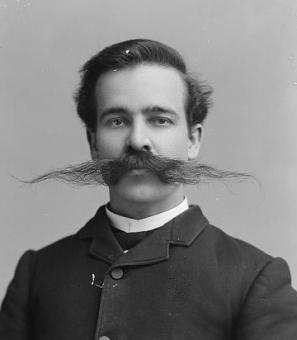How the Federal Anti-Cancer Effort Began
Today, the National Cancer Institute invests nearly $5 billion each year in medical research aimed at learning more about various types of cancer and finding cures for them. While it's a war in which many battles still lie ahead, there have been some encouraging signs of progress, with death rates decreasing for the most common types of cancer. By 2022, it's estimated that cancer survivors will amount to more than 5% of the U.S. population.
But it took a long time for the federal anti-cancer effort to get rolling, and it started small. In 1910, President William Howard Taft proposed creating a national laboratory dedicated to cancer research, but Congress wasn't too interested. In 1922, the U.S. Public Health Service allowed a few of its scientists to begin studying cancer. One of the pioneers was a Washington-based researcher, Dr. Carl Voegtlin of the Division of Pharmacology at the Hygenic Laboratory. He headed a group of scientists who looked at the effect of various chemicals on tumors. But it was a very small investment in fighting an affliction that claimed 83.4 lives per 100,000 population in 1920, making it one of the nation's leading causes of death.
More resources needed to be invested in fighting cancer, and the man who started the battle to get that money was a colorful politician from West Virginia named Matthew Mansfield Neely. Born in a log cabin in Doddridge County in 1875, Neely dropped out of Salem College but still somehow managed to get a law degree from West Virginia University. After a few years in practice, he gradually worked his way up the political ladder, serving as mayor of Fairmont and as a state delegate before winning election to Congress as a Democrat in a 1913 special election. After he was swept out of his Congressional seat by Warren G. Harding's Presidential landslide in 1920, the indefatigable Neely then ran for the U.S. Senate in 1922 and won.
In some ways, Neely was a Senator straight from central casting. He was known as an impeccable dresser and a flowery, grandiose orator, who reveled in archaic language and recited his remarks without notes, employing what was rumored to be a photographic memory. Despite his flamboyance and flair for speechifying, he disliked crowds, and usually quickly slipped away afterward rather than rub elbows with the public.
Neely got interested in cancer as a political issue after he saw statistics that showed a rise in cancer mortality from 70,000 deaths in 1910 to 115,000 in 1927. He came up with a gimmicky, attention-getting solution. In February 1927, he proposed that Congress offer a $5 million reward for "any information leading to the arrest of human cancer." As medical historian Siddhartha Mukherjee notes, "It was a lowbrow strategy — the scientific equivalent of hanging a mug shot in a sheriff's office."
Neely's stunt was pretty much ignored by other members of Congress. But according to historian Richard Rettig, when when the public got wind of it, they jammed Neely's office mailbox with more than 2,500 letters. Many were from snake-oil healers who mistakenly thought Congress had passed the bill and wanted to grab a share of the nonexistent prize money. The cancer bounty also got the attention of Dr. Joseph Bloodgood, a cancer surgeon from Johns Hopkins University, who met with Neely and introduced him to other medical researchers. They convinced Neely that the search for a cancer cure would take time.
As a result, in May 1928 Neely introduced a new bill, which would have instructed the National Academy of Sciences to investigate cancer and report back to Congress on the best way to coordinate cancer research. In a May 1928 speech, he noted Congress had appropriated $10 million to eradicate the corn borer, a crop pest, and $5 million to investigate tuberculosis in farm animals, while allocating not a single dollar for human cancer research. In a speech, Neely flamboyantly inveighed that cancer was a "monster that is more insatiable than the guillotine," and warned his fellow senators that "if the rapid increase in cancer fatalities should persist in the future, the cancer curse might in a few centuries depopulate the Earth."
That rhetoric must have scared Neely's colleagues because the Senate passed the legislation and authorized $50,000 for the study. But it died in the House.
That year, Neely was defeated in his re-election bid. His friend, Sen. William J. Harris, a Democrat from Georgia, took up the cause, introducing several bills in 1929 and 1930 that didn't go anywhere either. The idea of a real federal war against cancer seemed to be a non-starter.
But by the mid-1930s, according to historians Rettig and Guy Faguet, public pressure on Congress was building. Fortune magazine, part of Henry Luce's publishing empire, ran an article entitled "Cancer: The Great Darkness," and Life and Time also ran articles about the still-mysterious affliction that helped stir up an outcry. Physicians organized letter-writing campaigns. In 1937, Neely — who somehow had managed to get himself again elected to the Senate — worked with Sen. Homer T. Bone, a Democrat from Washington state, and Democratic Representatives Warren Magnuson of Washington and Maury Maverick of Texas to revive the proposal to fund cancer research.
Bone saw cancer as an economic justice issue; he believed that the disease hit hardest against the poor, who lacked access to healthcare. Maverick tried to sway House colleagues with stark statistics and self-interest. "One out of eight persons over 40 will die of cancer," he told them in a speech. "As most of us are over 40, I have figured there will be around 60 of us who thus meet deaths."
But the legislation to create a federal cancer research effort also met with suprisingly strong opposition. Some of the critics, according to Faguet, were promoters of folk medicine and faith healers afraid of losing followers, while others were conservative doctors who feared what they saw as a government takeover of medical research. But in the end, the Senate and House passed and reconciled the bills. In August 1937, President Franklin D. Roosevelt signed the National Cancer Act, which created the National Cancer Institute and provided an annual budget of $700,000. Voegtlin became NCI's first director.
Neely went on to win election as governor of West Virginia in 1940, and served briefly again in the House before returning to the Senate in 1947, where he spent the remainder of his life. Ultimately, he was vanquished by the foe that he'd tried to fight with legislation. After surviving a bout with bone cancer that cost him three of his fingers, Neely was again stricken with the disease in 1957. He became so ill that he spent much of his time in a hospital bed, though he roused himself to make occasional appearances on the Senate floor — still dressed elegantly, in his wheelchair — when then-Democratic leader Lyndon Johnson faced a close vote. He died in January 1958.


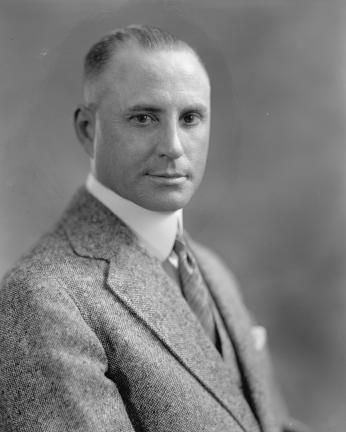

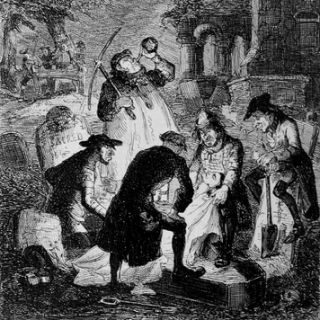
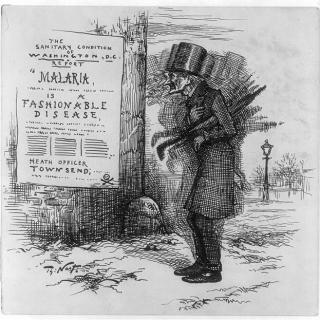
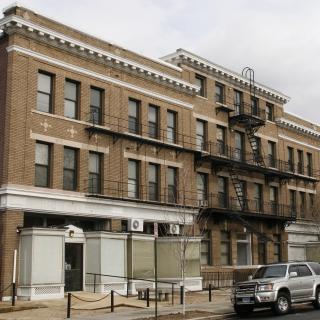
![Sketch of the mythical fuan by Pearson Scott Foresman. [Source: Wikipedia]](/sites/default/files/styles/crop_320x320/public/2023-10/Goatman_Wikipedia_Faun_2_%28PSF%29.png?h=64a074ff&itok=C9Qh-PE1)











